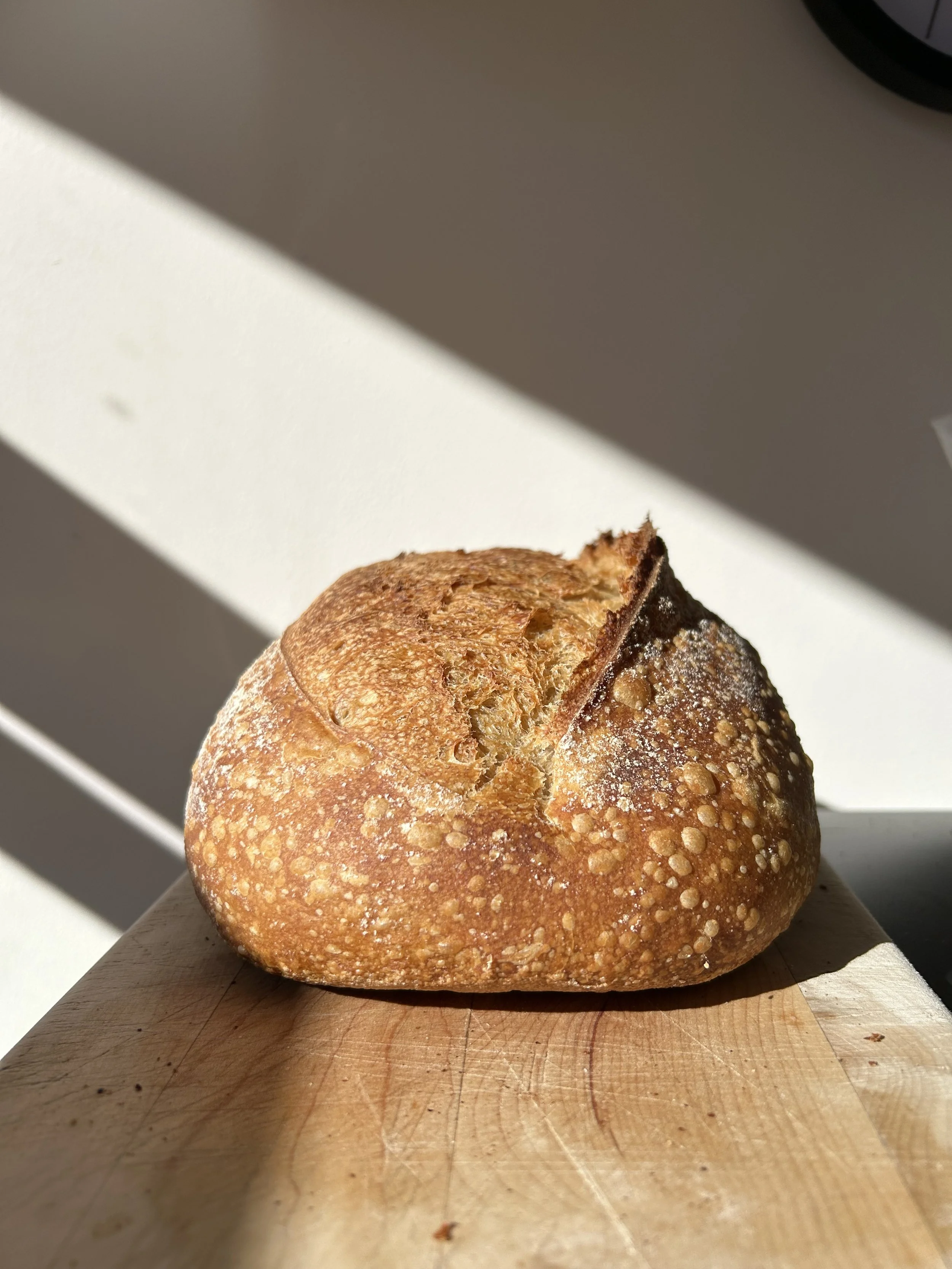on the trinity
grain, fermentation, and bake
27. August 2025
Grain, fermentation, and bake. Bread is a synthesis of these three elements. Each element can be sensed by each of our five senses.
Each element is a reflection of its environment. The intentions and interventions of the human hand are a fundamental part of each environment.
GRAIN
The grain is a reflection of the fields, farmer, soil, water, sun, weather, pests, tools, as well as the idea of grain that has emerged through time as the result of cooperation between grass and the selections of the cultivating human hand and habit. It is also a reflection of the mill, stones and rollers, and the interventions of the miller as the grain is reduced from seed into chops, meal, and flour.
FERMENTATION
Fermentation is a reflection of the grain and the life-enabling nutrients and enzymes inherited from each grain as seed of a new plant, metamorphosed by the mill into flour, and when mixed with water made available to the lives of yeasts and bacteria present from the fields all along and in the cultures, yeast and sourdough, selected and perpetuated by the bakers’ hands and habits. It is a reflection of a world of salt, sweet, and sour, of hot and cold, wet and dry. It is a reflection of the turning arm of the mixer, human and mechanical, of the shape of the bins where the mixed flour and water rests and grows as dough, of the table top where the dough is divided into pieces and brought into shapes negotiated between the baker’s hands, notions, and the dough itself. Of the baskets, metal pans, trays, wooden frames, and linen couches where the shaped doughs rest. The life inside the dough determines what shapes the dough can take. The baker consults with the life inside the dough and selects from these shapes one appropriate for the idea of the bread.
BAKE
The bake is a reflection of the shape of the oven and its distribution of heat, of vapor, and of the final moments of life, fermentation, growth and flow in the dough as it, like the seed is diverted from its fate as propagator of the plant and becomes flour, fodder for yeast and bacteria in dough, metamorphoses into bread, food for humans and our associates. The idea of the bread and the demands of the oven guide the bakers’ hands and habits as they shuffle the dough into and out of the oven.
ALL TOGETHER
All of these touches can be tasted, smelled, heard, seen, and felt in the bread. The possible variations are innumerable. What we call the trinity in bread can be likened to a musical triad. It is the basic harmony created by the balance of three tones. Each tone is discernible on its own and also in harmony or dissonance with the two accompanying tones. The tone of the grain is the root of the triad.
Each bread sounds a unique triad. Some breads taste of grain, some of yeast, some purely sour, and some purely burnt. Some taste of grain and the oven, but the tone of fermentation lingers only faintly in the background. Some breads are not fermented at all and taste only of grain and the oven.
Our trinity is a heuristic. Grain, fermentation, bake. Three simple questions and three simple answers we use to appraise the harmony in any given loaf on any given day. It is also an ideal that we ask of our bread. We want the flavor of the grain to sing alongside the flavors of fermentation and the oven. Sometimes loudly or sometimes quietly, but nevertheless all three, one by one and all together.

